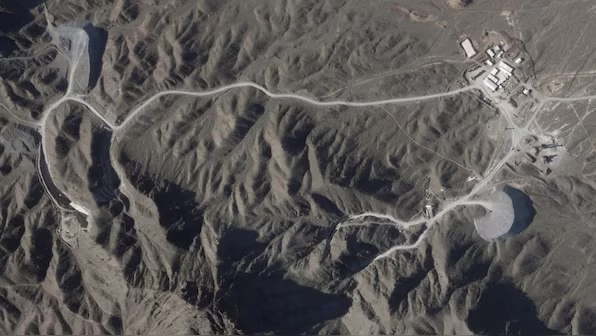Inside Pickaxe Mountain: Iran’s New Nuclear Threat?
Iran is building a secretive nuclear facility inside Pickaxe Mountain, near Natanz. Known as Kūh-e Kolang Gaz Lā, it’s buried deep to evade U.S. bunker-buster bombs. This has raised alarms in the U.S. and Israel. Here’s the latest on this covert site and the tensions it fuels.
Construction of a Hidden Stronghold
Iran has been digging tunnels under Pickaxe Mountain, minutes from Natanz. Satellite images from 2023 show rapid expansion, with four tunnel entrances and enhanced security.
Experts estimate the facility sits 80-100 meters deep, deeper than Iran’s Fordow site. This depth could shield it from U.S. GBU-57 bombs, designed to hit underground targets. Iran denies the site’s nuclear purpose, but suspicions persist.
Why Pickaxe Mountain Matters
The facility may house Iran’s nuclear ambitions. Reports suggest Iran moved 400-900 pounds of enriched uranium there before U.S. strikes on June 22, 2025.

This uranium, enriched to 60%, is close to weapons-grade. The site could also hold thousands of advanced centrifuges for uranium enrichment. Its secrecy and depth make it a potential safe haven for Iran’s nuclear program.
U.S. and Israel’s Growing Tensions
The U.S. and Israel fear Iran’s nuclear progress. Iran’s enrichment at Fordow and Natanz has neared weapons-grade levels since the U.S. exited the 2015 nuclear deal.
Israel began airstrikes on June 13, 2025, targeting Iran’s nuclear sites. The U.S. joined with B-2 stealth bombers, hitting Fordow, Natanz, and Isfahan. Both nations worry Pickaxe Mountain could keep Iran’s nuclear program alive.
Recent Strikes and Damage Assessment
U.S. strikes on June 22 used 30,000-pound bunker-buster bombs. They hit Fordow, Natanz, and Isfahan, causing significant damage.
Iran admits its facilities were “badly damaged” but claims no irreversible harm. Satellite images show craters and blocked tunnel entrances at Fordow.
However, Pickaxe Mountain’s deeper tunnels likely survived. Experts say Iran’s nuclear program may be set back by months, not years.
Iran’s Nuclear Intentions
Iran insists its nuclear program is for peaceful energy. Yet, its enrichment levels and secretive sites like Pickaxe Mountain suggest otherwise.
The IAEA has lost track of significant uranium stockpiles. Iran’s parliament recently voted to suspend IAEA cooperation, raising fears of covert enrichment. Analysts warn Pickaxe could be a fallback to sustain weapons-grade uranium production.
Global Reactions and Future Risks
The U.S. claims the strikes crippled Iran’s nuclear capabilities. Israel agrees, estimating a multi-year setback. However, a leaked U.S. intelligence report suggests only a six-month delay.
French President Macron warned of increased risks of secret enrichment. Iran’s defiance and Pickaxe’s fortifications signal ongoing challenges. Talks between the U.S. and Iran are set for next week, but tensions remain high.

